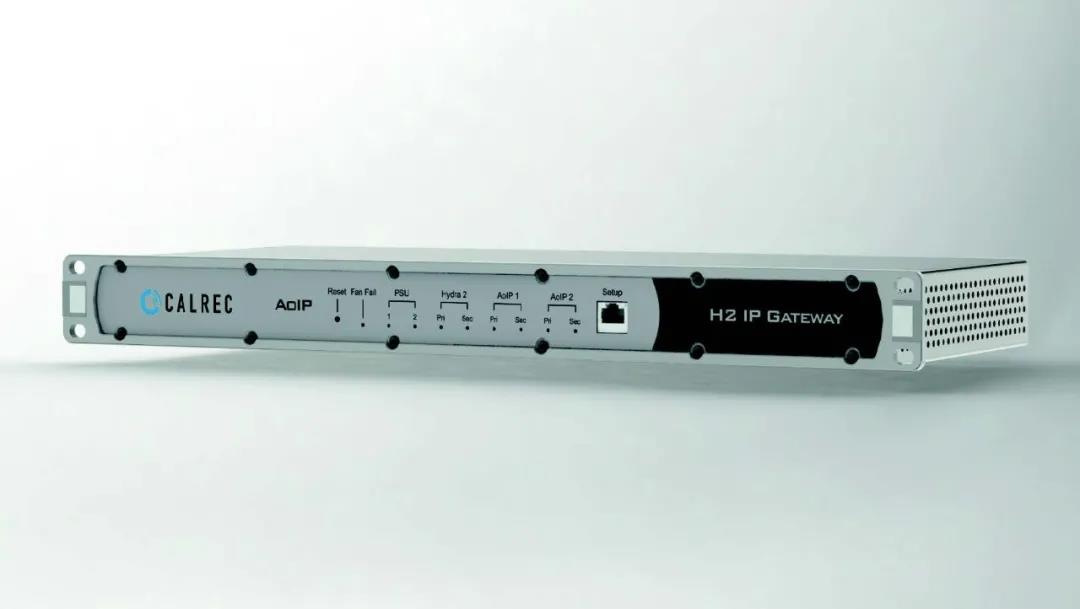Rightway Audio Consultants Ltd.
Case Share: Mind the Gap
Huahui Audio 2021-09-17
For many years now, the industry has been defining what an IP-based workflow should entail. It has been forming alliances, think-tanks, societies and technology partnerships in order to define user cases, build protocols, test connectivity and promote solutions. By now everyone appears to be in agreement as to where the industry is heading; but there’s still some uncertainty surrounding how to get there.
The ultimate destination is one of total IP integration within broadcast workflows, but there are many different ways to get there, the route depends very much on the specific demands of each broadcaster. Many broadcasters have made large investments and committed themselves heavily to incumbent workflows based on the technologies that have been developed over the past 10-15 years. A lot of these technologies remain current, powerful and more than able to perform the task they were installed for. A wholesale move away from these proprietary systems may not make financial sense at this juncture.
With the exception of greenfield developments that can commit to IP-based workflows from the outset, another direction will have to be proposed if facilities currently operating with non-IP-based systems are to make the switch. One of the major benefits outlined in the argument to switch to IP is utilising IP infrastructures that already exist, thus saving money. On the surface that appears to be a non-starter when faced with the initial outlay required to change to facility wide IP-compatible equipment.
So, is there an alternative route that will help with a smoother transition into IP workflows? Happily, there is, in the form of gateway technologies.
Why Transition?
Before considering the benefits of gateway products, it’s important to understand why a move to IP will be necessary in the coming years. IP-compatible technologies are undeniably becoming more prevalent.
One of the major motivations is utilising existing network infrastructures. These may already exist in a broadcasting facility as part of the IT network. The initial outlay for any additional cabling and terminals would be vastly less compared to that of a full installation.
Another appeal is using “Commercial Off-The-Shelf” (COTS) hardware. This could already be in use in existing systems and can be easily sourced if more is required. Again, using standard equipment that’s readily available, instead of proprietary alternatives, is a driving factor in the move to IP.
The primary focus of the switch is simply to use common transport protocols, with equipment made by different manufacturers speaking the same language over a standard network. This allows interconnectivity without “translation” devices and the ability to organise and control numerous streams from a central application. This streamlines workflows, ensures compatibility and – that age-old motivator – saves money.

Gateway Technology
Most broadcast manufacturers already offer IP Gateways that allow their equipment to be connected to an IP Network. These effectively act as an IP input/output interface giving the equipment access to receive streams on the IP Network and to generate streams and send them out onto the IP network. Gateways can connect directly to equipment or via existing IO interfaces like MADI. Broadcasters can begin to leverage the benefits now using these gateway technologies, allowing them to quickly and simply augment their current workflow.
Moving to a completely new system is not only financially draining it also has a learning curve. This curve will initially be steep as there is much to learn within the broadcast facility. By using a gateway technology, the curve can be flattened as not everyone will need to be across the technology from the outset. In the long run this can make the transition a smoother journey.
By not swapping out all the equipment simultaneously, current systems can continue to be used, keeping everything on air and allowing the transfer to be non-disruptive to the programming schedule. It also allows the broadcaster to get the full value out of their investment.
Once a gateway has been introduced and an IP network established, it will be relatively easy to start introducing other equipment onto the network, either with native IP equipment or via gateways. This method will allow for equipment to be replaced when the time is right.
Some proprietary solutions are currently more powerful than their IP counterparts. Having a system that includes elements from both proprietary and IP systems allows the broadcaster to leverage the best of both worlds. This can include larger channel counts over single cables with a deterministic nature and lower latency.
The standards for audio and video transport are now clearly established and documented within the ST2110 suite of protocols. Industry bodies and manufacturers are working hard together to test and finalise the NMOS discovery and registration mechanisms as outlined in ANWA IS-04 and ANWA IS-05 NMOS connection management.
This means that although IP has a little way to go to be on a par with some established proprietary systems, it promises greater interoperability. Some manufacturers are already implementing NMOS connection management mechanisms and are releasing equipment that is already NMOS (IS04 or IS05) compatible.
However, more established systems already include automatic discovery and registration together with a control layer that’s inherent in their network solution and these are proven and being relied upon by large broadcasters globally. Utilising a gateway solution allows the broadcaster to continue to benefit from these as the industry irons out the final creases in its standards.
What’s Next?
Migration to IP is already underway. Manufacturers that currently produce proprietary systems are also bringing IP-based products to market. As this becomes more prevalent, broadcasters who have established relationships with manufacturers will look to their new IP products when upgrading their systems. Relationships like these are built on trust and support; not only in the kit but also how companies can support their customers through this significant transition.
During the migration there will be a growth in hybrid systems utilising gateway products to link IP systems with their legacy equipment. Manufacturers may also produce in-field upgrades to convert current hardware to be IP compliant. Ironically, there will have to be a greater level of interoperability as there‘ll be multiple transport and networking technologies that need to work in tandem. This will end only when legacy equipment is fully superseded by its IP counterpart.
As with the move from analogue to digital or SD to HD, this process won’t happen overnight, so the requirement to make the transition as painless as possible is a necessity. The onus is on the manufacturers to provide the appropriate tools.



 Permanent Installation
Permanent Installation  Radio Broadcasting
Radio Broadcasting  Arts Performing
Arts Performing  Touring & Rental
Touring & Rental  Technical Reference
Technical Reference  Others
Others  Oversea Application
Oversea Application 


